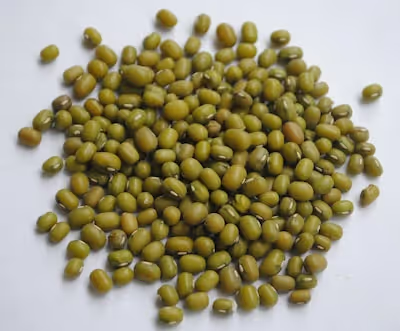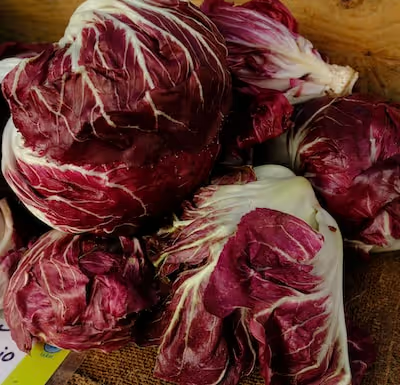Growing Sapote: How to Cultivate and Enjoy This Sweet Fruit

Growing Sapote
Growing sapote rewards patience with lush foliage and deliciously exotic fruit. Thrive they will, if you plant sapote trees in well-draining soil, full sun, and consistently warm temperatures. Fertilize moderately and water regularly, and soon you'll harvest ripe sapotes brimming with flavor. Explore this comprehensive guide and cultivate your own slice of paradise.
Cheatsheet: Sapote Growing & Harvest Guide
🌞 Site & Climate
- Full sun; sheltered from strong wind
- Thrives in USDA 10-12 (min 32°F/0°C)
- Optimal temp: 70–85°F (21–29°C)
🌱 Propagation
- Sow fresh seeds in sandy loam
- Germination: 3–6 weeks at 80°F (27°C)
- Grafting boosts yield quality
🛠️ Tools and Products You'll Need
- Spade or shovel
- Pruning shears
- Mulch
- pH meter (6.0–7.5 ideal)
- Drip irrigation
- Organic fertilizer
- Tree stakes (young trees)
🌾 Planting
- Space trees 25–35 ft (8–11 m) apart
- Plant in late spring
- Well-draining soil, rich in compost
- Water deeply, let soil dry between sessions
🌳 Care & Maintenance
- Mulch 3 in (8 cm) deep, 2 ft (60 cm) radius
- Fertilize with balanced NPK, 3x/year
- Prune lightly after harvest; remove suckers
- Monitor for scale, mites, root rot
🍈 Harvest & Ripeness
- Fruit matures 1.5–3 yrs after planting
- Pick when skin turns dull, slight give to touch
- Ripen at room temp 3–5 days
- Each tree yields 50–200 lbs (23–90 kg) annually
🥗 Nutrition & Uses
- Rich in fiber, vitamin C, potassium
- Eat fresh, blend into smoothies, desserts, or salsas
- High-calorie, energy-boosting fruit for self-sufficiency
🪴 Step-by-Step Recap
- Prepare site: sunny, sheltered, loamy soil
- Sow seeds or graft young sapote
- Water deeply; mulch and stake as needed
- Fertilize and prune regularly
- Check for pests and treat promptly
- Harvest ripe fruit; store at room temperature
-
Growing Sapote: How to Cultivate and Enjoy This Sweet Fruit
I planted my first sapote after tasting a sun-warm slice that tasted like custard with a hint of avocado, and I have chased that flavor ever since. Growing Sapote rewards patience with fruit that spoils you for supermarket produce.
Know your sapotes before you plant
- White sapote (Casimiroa edulis): creamy, custard-pear flavor, USDA zones 9b to 11, better cold tolerance than the others.
- Black sapote (Diospyros digyna): chocolate pudding texture when fully soft, zones 10 to 11, likes heat and steady moisture.
- Mamey sapote (Pouteria sapota): sweet pumpkin and almond notes, zones 10 to 11, big tree and big fruit.
- Green sapote (Pouteria viridis): mamey’s cooler cousin for warm 9b to 10a sites, slower and choosier about drainage.
- Sapodilla (Manilkara zapota): often sold as sapote, caramel-pear flavor, tough evergreen, zones 10 to 11.
Climate and site selection
Sapotes thrive with long, warm summers and mild winters, and they really dislike soggy roots. I tuck trees near a south-facing wall in marginal areas to steal a few degrees on frosty nights.
White sapote handles brief dips to 22 to 24 F (-5.5 to -4.5 C), while black, mamey, green sapote and sapodilla prefer 28 to 32 F (-2 to 0 C) or warmer. Windbreaks reduce fruit drop and leaf tatter in coastal gardens.
Soil and drainage
Good drainage beats rich soil for all sapotes. Aim for a pH of 6.0 to 7.0 and avoid heavy clay unless you can plant on a mound 12 to 18 inches high (30 to 45 cm).
I blend compost into the top 2 inches (5 cm) after planting rather than inside the hole, which keeps roots from circling in a fluffy pit. Mulch 3 feet (1 m) out with wood chips to moderate soil temperature.
Planting, spacing and staking
Set trees at the same depth as the nursery container and water deeply to eliminate air pockets. Space white sapote at 15 to 20 feet (4.5 to 6 m), black and sapodilla at 12 to 18 feet (3.5 to 5.5 m), and mamey at 18 to 25 feet (5.5 to 7.5 m).
I stake the first season in windy sites with a soft tie. Remove the stake once the trunk calipers up and the roots grip.
Irrigation that builds backbone
Keep the first year evenly moist, about 1 to 1.5 inches of water per week (25 to 38 mm), split into two irrigations during heat. Let the top 2 inches (5 cm) dry between waterings to push roots deeper.
Mature trees prefer a deep soak every 10 to 14 days in summer if there is no rain. Avoid frequent, shallow sprinkles that create weak, surface-rooted trees and bland fruit.
Feeding and minerals
Sapotes respond to modest nitrogen and steady potassium and calcium for flavor and cell strength. I use a balanced organic fertilizer at label rates in spring and midsummer, then a light hand in late summer to avoid tender growth before winter.
Yellowing between veins often points to iron or manganese lockout on high pH soils. A chelated micro mix in spring snaps leaves back to glossy green.
Training and pruning
Top young trees at 30 to 36 inches (75 to 90 cm) to encourage low scaffolds, which saves your shoulders at harvest. Keep the canopy to 8 to 12 feet (2.5 to 3.5 m) with yearly heading cuts after fruiting.
Remove dead wood and crossing branches, and thin dense interior shoots to light up fruiting spurs. White sapote fruits on new to one-year-old wood, so keep growth refreshed.
Flowering, pollination and fruit set
White sapote tends to set on its own, yet cross-pollination can bump yields. Black sapote and mamey may fruit better with a partner cultivar nearby and pollinator traffic.
I keep bloom-time irrigation steady and avoid heavy nitrogen. If fruit set lags, hand pollinate a few flowers with a small brush in the cool morning.
Container culture
Black sapote and sapodilla handle large containers best, with 25 to 45 gallon (95 to 170 L) tubs and a fast-draining mix. Up-pot in stages and root prune every two to three years to keep vigor without tipping.
Feed little and often, and water to full saturation, then let excess drain freely. Sun on all sides keeps the canopy balanced.
Pests, diseases and simple IPM
Scale, mealybugs and whiteflies bring sooty mold on the honeydew they excrete. A 2 percent horticultural oil spray smothers crawlers, and sticky cards help you track pressure.
Anthracnose can mark fruit in humid climates, so improve airflow and use copper sprays during wet springs if your extension service recommends them. Fruit flies may require bagging fruit with mesh sleeves once they reach marble size.
Harvest timing and ripening cues
- White sapote: fruit turns pale green to yellow-green and softens slightly, then finishes at room temp in 1 to 3 days.
- Black sapote: pick when olive green and glossy, then let it soften and turn brown-black with a slight give. Fully ripe flesh looks like chocolate custard.
- Mamey sapote: use the scratch test near the stem, rind beneath should show salmon color before picking, then ripen on the counter.
- Sapodilla: fruit detaches with a gentle twist when mature, then softens in 2 to 7 days. A grainy-firm feel means wait.
UF/IFAS Extension notes that mature mamey sapote in South Florida can produce heavy crops seasonally, with yield tied closely to cultivar, canopy size and irrigation.
Postharvest handling
Room temperature ripening preserves aroma and texture. Refrigerate only fully ripe fruit at 45 to 50 F (7 to 10 C) for up to a week to avoid chilling injury.
I store fruit with the stem end up on a towel to prevent flat spots. A paper bag speeds ripening if your kitchen runs cool.
Flavor, nutrition and kitchen moves
Black sapote blends with banana, cacao and a pinch of salt for a silky mousse. White sapote shines fresh with lime and flaky sea salt, no sugar needed.
Mamey powers milkshakes, ice cream and overnight oats, with natural sweetness and fiber. Sapodilla caramel notes turn smoothies into dessert without trying.
Yields and timelines
Grafted white sapote fruit in 2 to 4 years, black sapote in 3 to 4, and mamey in 4 to 7, depending on warmth and care. Seedlings test patience and may never match the parent’s quality.
A mature, well-managed tree can feed a household and neighbors. I plan pruning days around ripening waves to keep the ladder in check and fruit within reach.
Buying guide: what to look for in nursery stock
- Grafted trees with a labeled cultivar beat unnamed seedlings for reliable fruit and size control.
- Choose stout trunks with good taper and no circling roots, slide the pot off and check.
- Pick cultivars suited to your zone and space, then ask about bloom season and fruiting window to stagger harvests.
- Container sizes of 3 to 7 gallons (11 to 26 L) establish faster than huge boxed trees that sulk after planting.
Fertilizer choices I trust
For conventional programs, a 6-2-6 or 8-3-9 with minors keeps growth steady. For organic programs, I rotate fish hydrolysate, kelp, and composted poultry manure in spring and early summer, then switch to sulfate of potash for late-season sizing.
Common mistakes I see in Growing Sapote
- Planting too deep and burying the graft union, which invites rot and odd suckers.
- Overwatering in cool weather, the silent killer of new sapote roots.
- Letting trees rocket to 20 feet (6 m) before the first cut, then regretting the harvest circus.
- Ignoring micronutrients on calcareous soils, which starves leaves and fruit quality.
Comparisons and best picks
- Small yard, warm coastal zone: dwarf or semi-dwarf white sapote cultivars on compact rootstock, easy pruning and forgiving fruit.
- Heat lover with long summer: black sapote for novelty desserts and steady cropping once mature.
- Tropical sweetness and smoothies: mamey sapote if you have room and frost protection, nothing else tastes like it.
- Bulletproof evergreen hedge with edible payoff: sapodilla, slow but steady, handles salt and wind better than most fruit trees.
Season-by-season care blueprint
Late winter: structural pruning, mulch refresh, micronutrient drench on high pH soils. Spring: light feeding, steady irrigation, set pheromone or sticky traps early for fruit flies.
Summer: thin excess fruit to save branch strength, deep soak during heat waves, bag fruit if pressure spikes. Fall: scale back nitrogen, tip prune for size control, prepare frost cloth and water-in before cold snaps.
Field notes that saved me time
On my black sapote, fruit that looks perfect can taste flat if I rush harvest by a week. On white sapote, a slight lift at the stem tells me more than color, fruit that releases with a gentle nudge ripens evenly on the counter.
Mamey latex can gum up tools, so I keep a rag with a dab of cooking oil handy. Sapodilla fruiting often surges after a warm, dry spring followed by regular irrigation.
Credible references worth reading
UF/IFAS Extension has practical guides for mamey sapote, sapodilla and black sapote geared to home orchards in warm climates. UC Agriculture and Natural Resources publishes white sapote guidance on site selection, pruning and harvest cues.
California Rare Fruit Growers compiles cultivar notes from growers that match what I see in the field. Your local cooperative extension can refine fertilization, pest timing and copper use to your microclimate.
Sapote Cultivation FAQ: Expert Answers to Common Questions
Which climate and soil conditions favor successful sapote growth?
Sapote fruits flourish effortlessly in tropical and subtropical climates, thriving best when temperatures remain consistently above 50°F. Well-draining soil, enriched with organic matter and slightly acidic to neutral pH (6.0–7.0), strongly encourages healthy root development and bountiful harvests.
What's the ideal watering schedule for vigorous sapote trees?
Sapotes despise standing water yet appreciate regular moisture. Provide deep, thorough watering weekly in dry spells, allowing the topsoil to dry slightly between waterings. Maintain a balance—sapote trees prefer to sip rather than drown.
How can growers encourage abundant fruiting on sapote trees?
To coax plentiful fruit production, fertilize sapote trees seasonally with a balanced organic fertilizer rich in potassium and phosphorus. Pruning away crowded branches promotes vigorous airflow and sunlight penetration—two ingredients essential for lush fruit yields.
Are sapote trees vulnerable to pests or diseases?
While generally resilient, sapote trees occasionally attract fruit flies, scale insects, or fungal infections. Maintain vigilant garden hygiene, promptly removing fallen fruits and dead foliage. Introduce beneficial insects like ladybugs or lacewings and use organic fungicides judiciously as needed.
When is the optimal moment to harvest ripe sapote fruit?
Sapotes ripen gently, signaling readiness by softening slightly under thumb pressure and emitting a subtly sweet fragrance. Pluck carefully by hand, preserving the delicate flesh, allowing fruits to ripen fully at room temperature if harvested slightly underripe.
Growing Sapote is a test of patience and a reward for the senses. This fruit asks for rich soil, steady warmth, and just enough water to coax out its buttery sweetness. Keep the tree shielded from wind, feed it well, and time will do the rest. Regular pruning helps channel the plant’s energy and shapes its growth, just like you would with kiwi or carob. Once sapote matures, the fruit delivers flavors that earn its place in any backyard orchard. Trust the process, and let the tree surprise you—there’s nothing quite like breaking open a ripe sapote under your own sun.
Health Benefits of Home-Grown Sapote Fruit
Nutrient Density in Sapote Fruit
- Vitamin-Rich: Excellent source of vitamins A, C, and E to support immune function and healthy skin.
- Essential Minerals: Provides potassium, magnesium, and iron for cardiovascular health, nerve function, and energy metabolism.
- Dietary Fiber: High fiber content promotes digestive health and aids in weight management.
Antioxidant Filled Goodness
Sapote fruit contains polyphenols that neutralize cellular damage, slowing aging and reducing disease risks.
Supports Heart Health
Rich in potassium and fiber, sapote helps regulate blood pressure, lowers LDL cholesterol, and protects cardiovascular function.
A Natural Energy Booster
High natural sugar content provides sustained energy, ideal as a pre- or post-workout snack.
Enhances Bone Strength
Calcium, magnesium, and phosphorus in sapote fruit fortify skeletal structures and maintain bone density.
Promotes Mental Wellbeing
Vitamin B6 content aids serotonin production, enhancing mood stability and mental clarity.
Find out which plants will thrive in your garden!
Answer a few fun questions and get custom plant recommendations perfect for your space. Let’s grow something amazing together!

start your season





